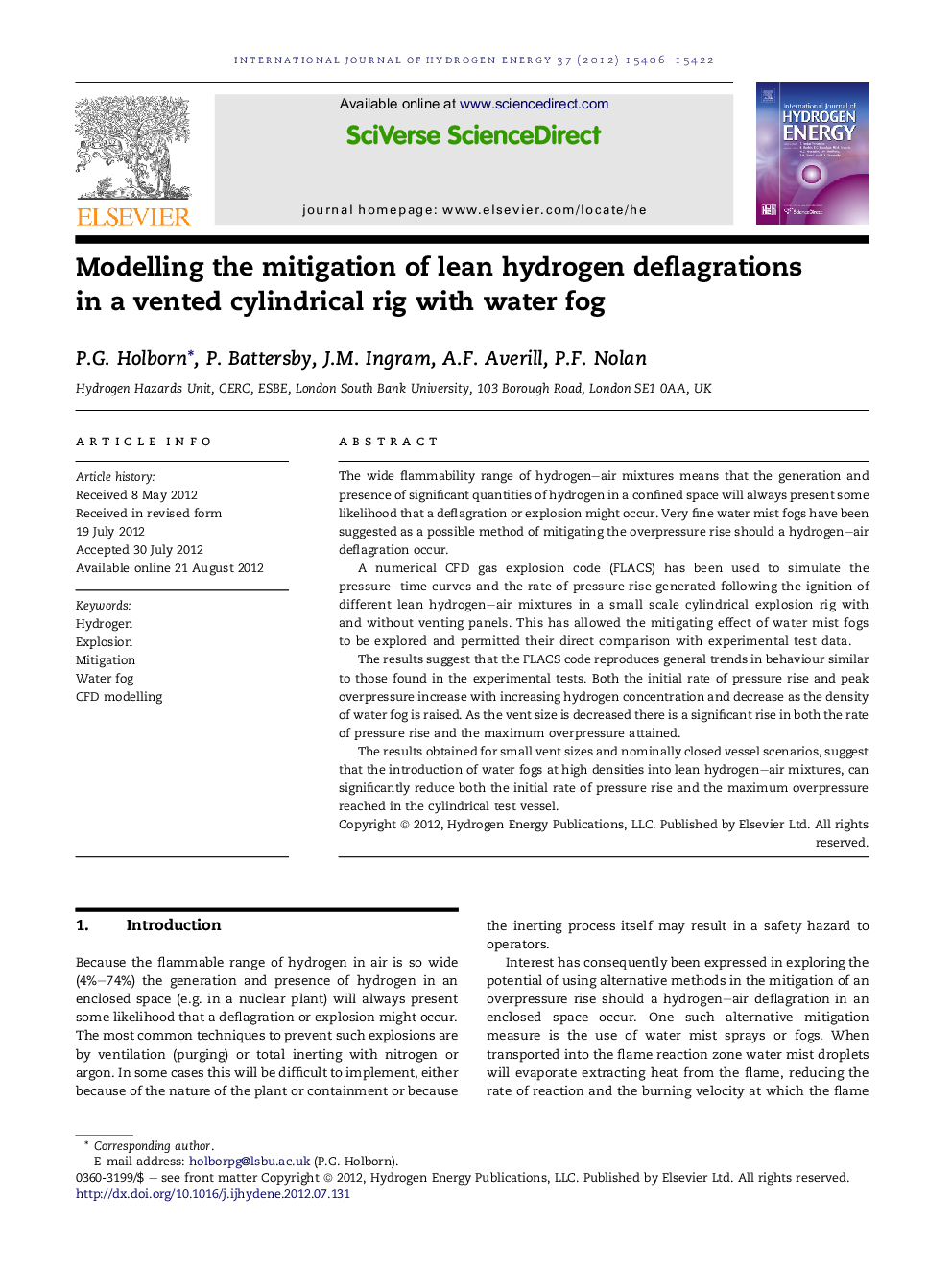| Article ID | Journal | Published Year | Pages | File Type |
|---|---|---|---|---|
| 1274547 | International Journal of Hydrogen Energy | 2012 | 17 Pages |
The wide flammability range of hydrogen–air mixtures means that the generation and presence of significant quantities of hydrogen in a confined space will always present some likelihood that a deflagration or explosion might occur. Very fine water mist fogs have been suggested as a possible method of mitigating the overpressure rise should a hydrogen–air deflagration occur.A numerical CFD gas explosion code (FLACS) has been used to simulate the pressure–time curves and the rate of pressure rise generated following the ignition of different lean hydrogen–air mixtures in a small scale cylindrical explosion rig with and without venting panels. This has allowed the mitigating effect of water mist fogs to be explored and permitted their direct comparison with experimental test data.The results suggest that the FLACS code reproduces general trends in behaviour similar to those found in the experimental tests. Both the initial rate of pressure rise and peak overpressure increase with increasing hydrogen concentration and decrease as the density of water fog is raised. As the vent size is decreased there is a significant rise in both the rate of pressure rise and the maximum overpressure attained.The results obtained for small vent sizes and nominally closed vessel scenarios, suggest that the introduction of water fogs at high densities into lean hydrogen–air mixtures, can significantly reduce both the initial rate of pressure rise and the maximum overpressure reached in the cylindrical test vessel.
► Examine mitigation of H2 deflagrations with water fog for a vented cylindrical vessel. ► Compare FLACS CFD explosion model simulations and experimental test data results. ► The model reproduces similar general trends to those found in the experimental tests. ► Water fog can significantly reduce the rate of pressure rise and peak overpressure.
